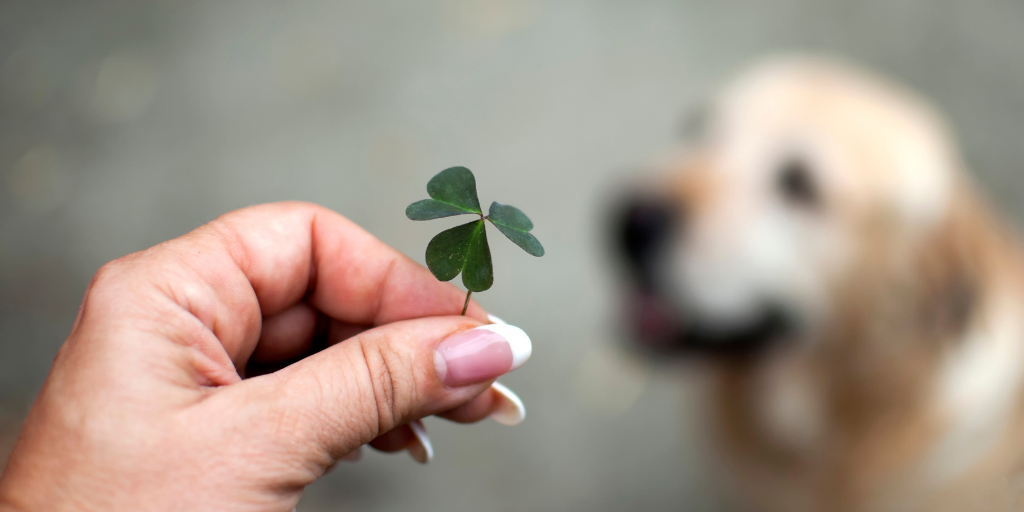When we mention shamrocks, we're not talking about the green milkshakes from McDonald's. Shamrocks are those little three-leafed green plants that begin to pop up in the spring. And they are one of the most iconic symbols for St. Patrick’s Day. But these cute little sprigs are actually dangerous to dogs. How so? We detail that below:
Why Are Shamrocks Dangerous To Dogs?
Shamrocks are part of the genus Oxalis, which includes several plants that contain soluble calcium oxalate - a substance that can become toxic to dogs when ingested in excess. When chewed or swallowed, oxalate can cause diarrhea and excessive salivation.
Furthermore, continued consumption can lead to kidney damage, hormonal effects and metabolic issues (such as changes to electrolyte levels). These reactions occur when enough oxalates combine in the stomach or are absorbed into the bloodstream. Once this happens, the oxalates bind with calcium, essentially removing it from your dog's system. The sudden drop in available and usable calcium is what negatively impacts the kidneys. Such severe reactions are typically rare, but would require vet attention.
Pro Tip: Common vegetables that contain oxalate are kale and spinach.
Symptoms Of Shamrock Poisoning
The entire shamrock plant contains oxalate, so there's no part that wouldn't cause issues for your dog. Here are several signs and symptoms of oxalate poisoning:
- Diarrhea
- Excessive salivation
- Lethargy
- Labored breathing and panting
- Loss of appetite
- Excessive thirst
- Frequent urination
- Vomiting
- Pawing at or rubbing the face or mouth
- Unusual vocalization
- Tremors
- Blood in urine
- Kidney failure
Diagnosing Shamrock Poisoning In Dogs
If your dog is showing any of the aforementioned symptoms, take him or her to the vet as soon as possible. This is especially important if you caught your dog snacking on the clovers. If you aren't sure that the plant your dog ate is a shamrock, you can bring a sample to your vet so they can properly identify it. Your vet will likely run tests, including a complete blood count (CBC) and urinalysis among others. This will help determine the toxin, evaluate kidney function and explore any other issues that may be at play. If it is shamrock poisoning, blood tests will likely show low calcium levels as well as abnormal metabolic and hormonal numbers.
Treating Shamrock Poisoning
If shamrock poisoning is confirmed, the vet will likely put your dog on intravenous (IV) fluid treatment to support kidney function and prevent dehydration. They may also give your dog electrolytes and laxatives to help your dog more quickly expel the toxic substances via urination and bowel movement.
Recovering From Shamrock Poisoning
The prognosis is good for dogs who have ingested a small amount of shamrocks. For dogs who have ingested large quantities of the plant, however, permanent kidney damage is likely to occur. Your vet will assess the extent of the damage and devise a plan moving forward to monitor and treat the issue. Fortunately, death from shamrock ingestion is rare.
A lot of dogs like to graze as they walk, snacking on plants and grass, and it's hard to keep them from eating everything. So just make sure to be alert and aware when outside, and keep an eye out for signs that something isn't right.

